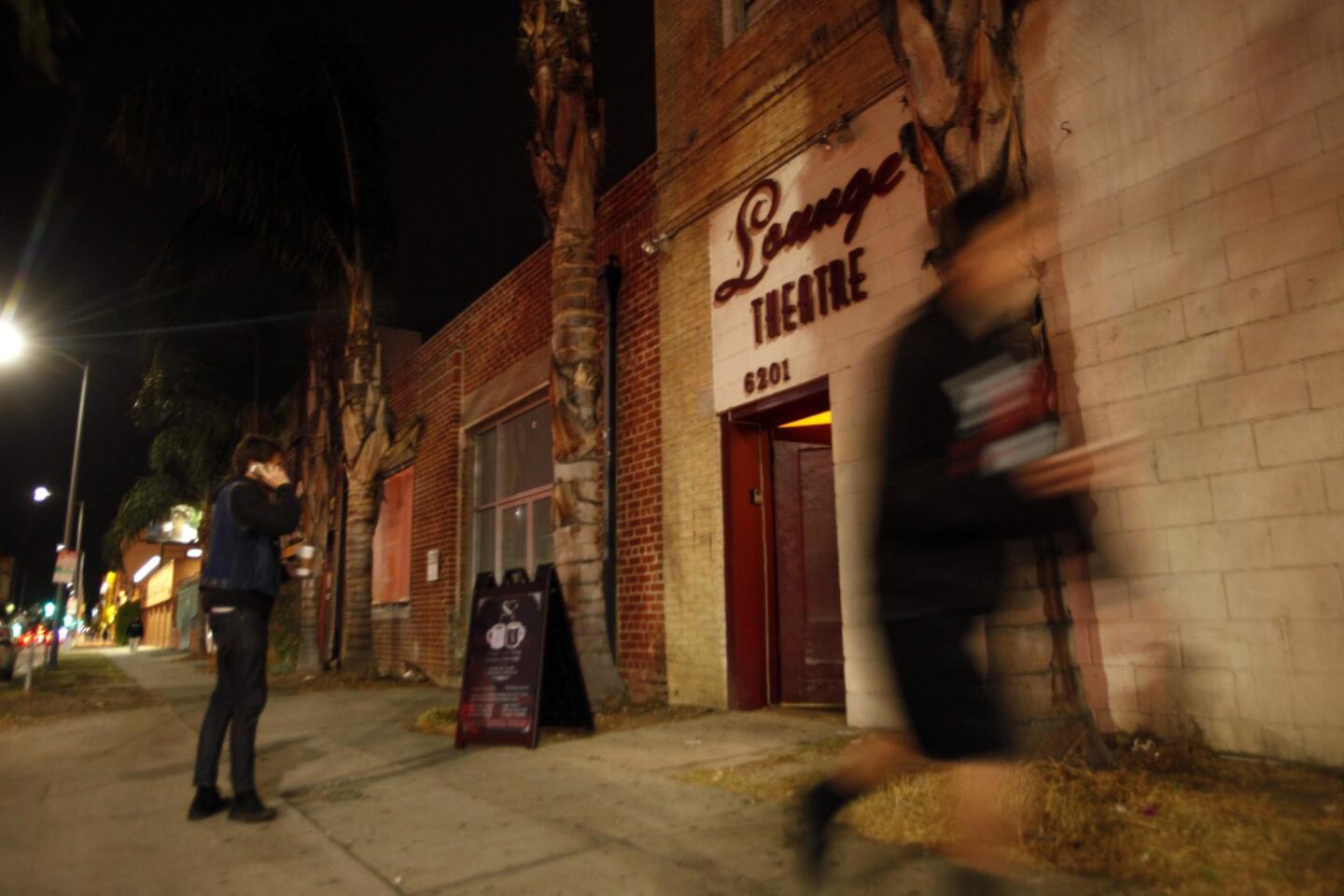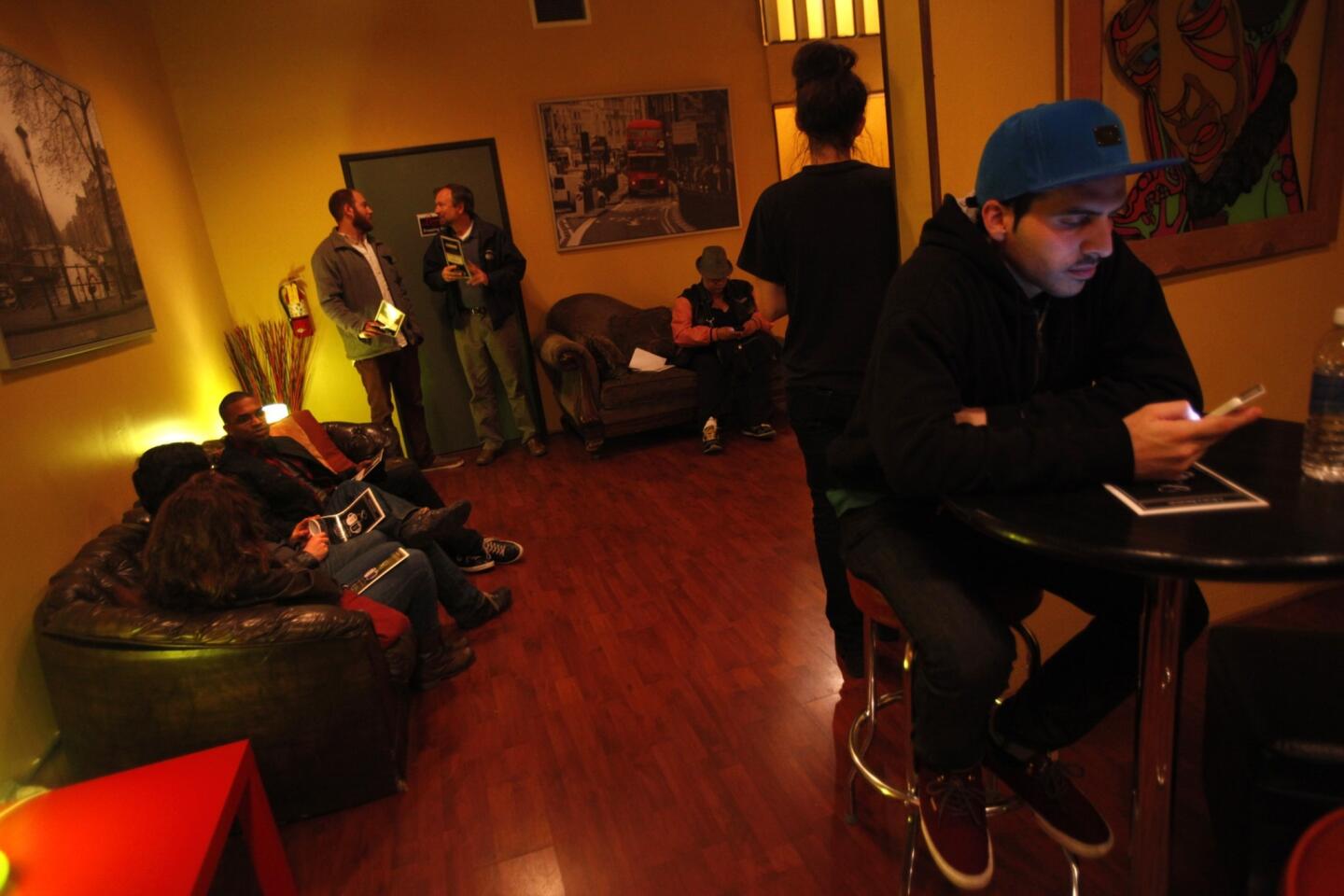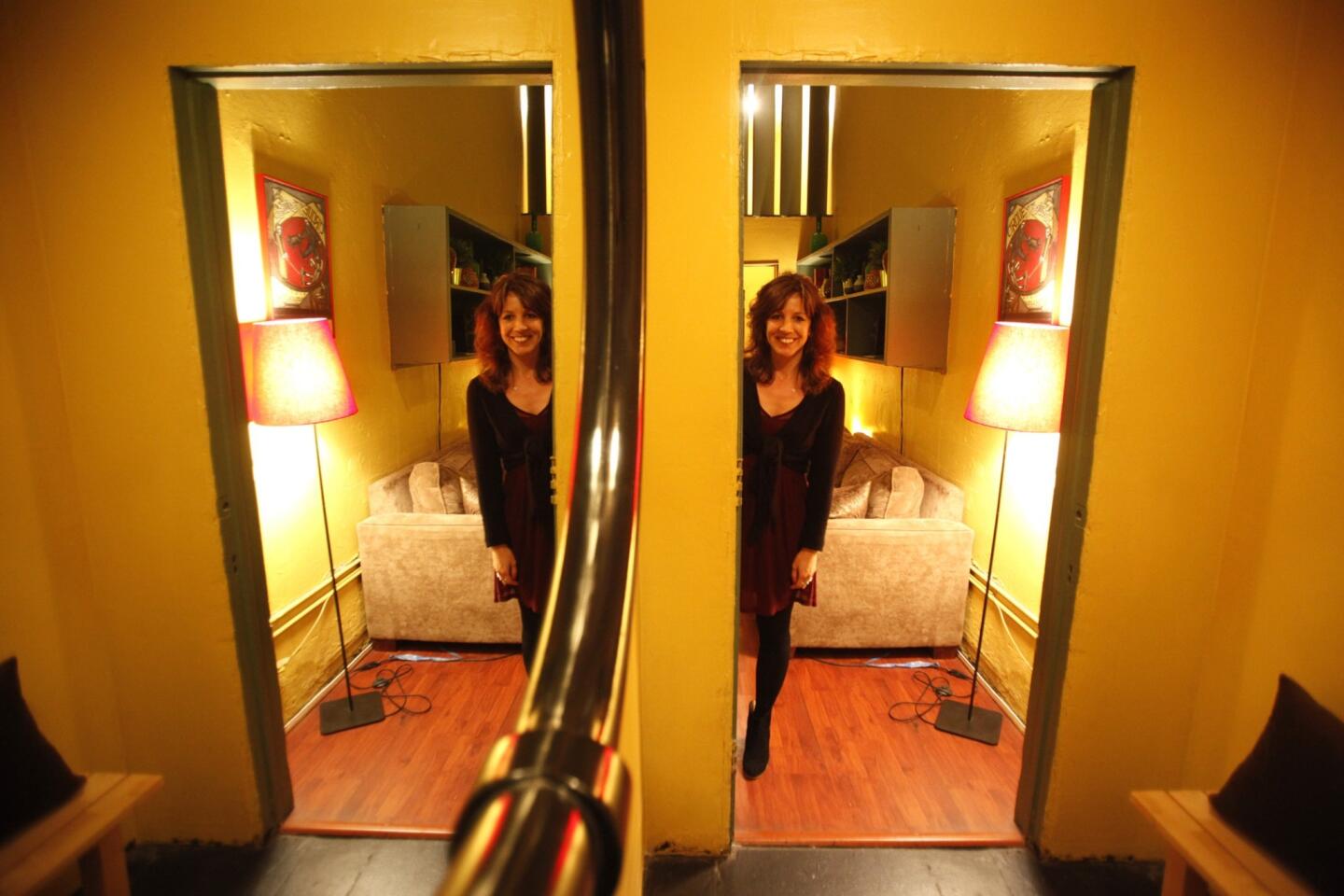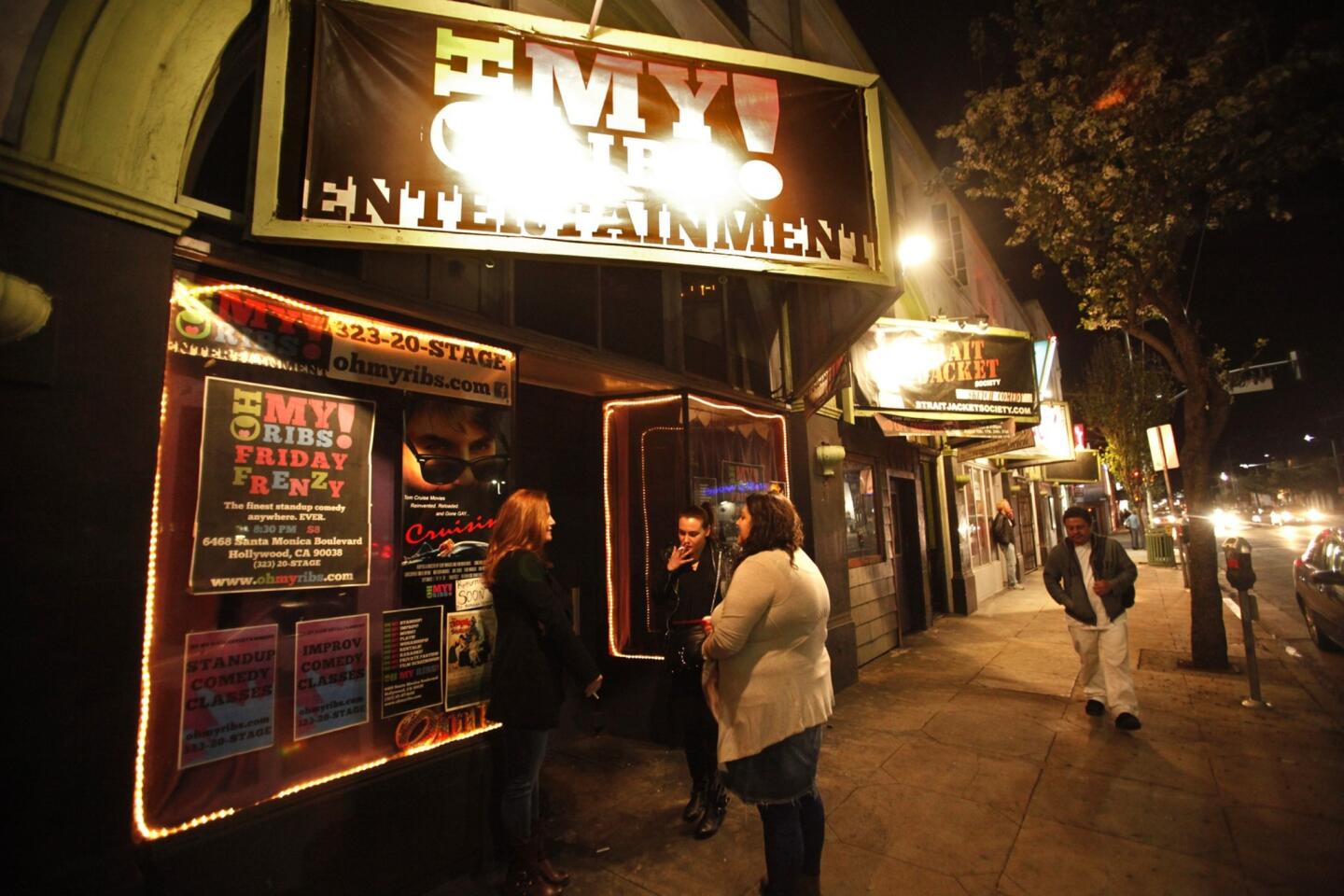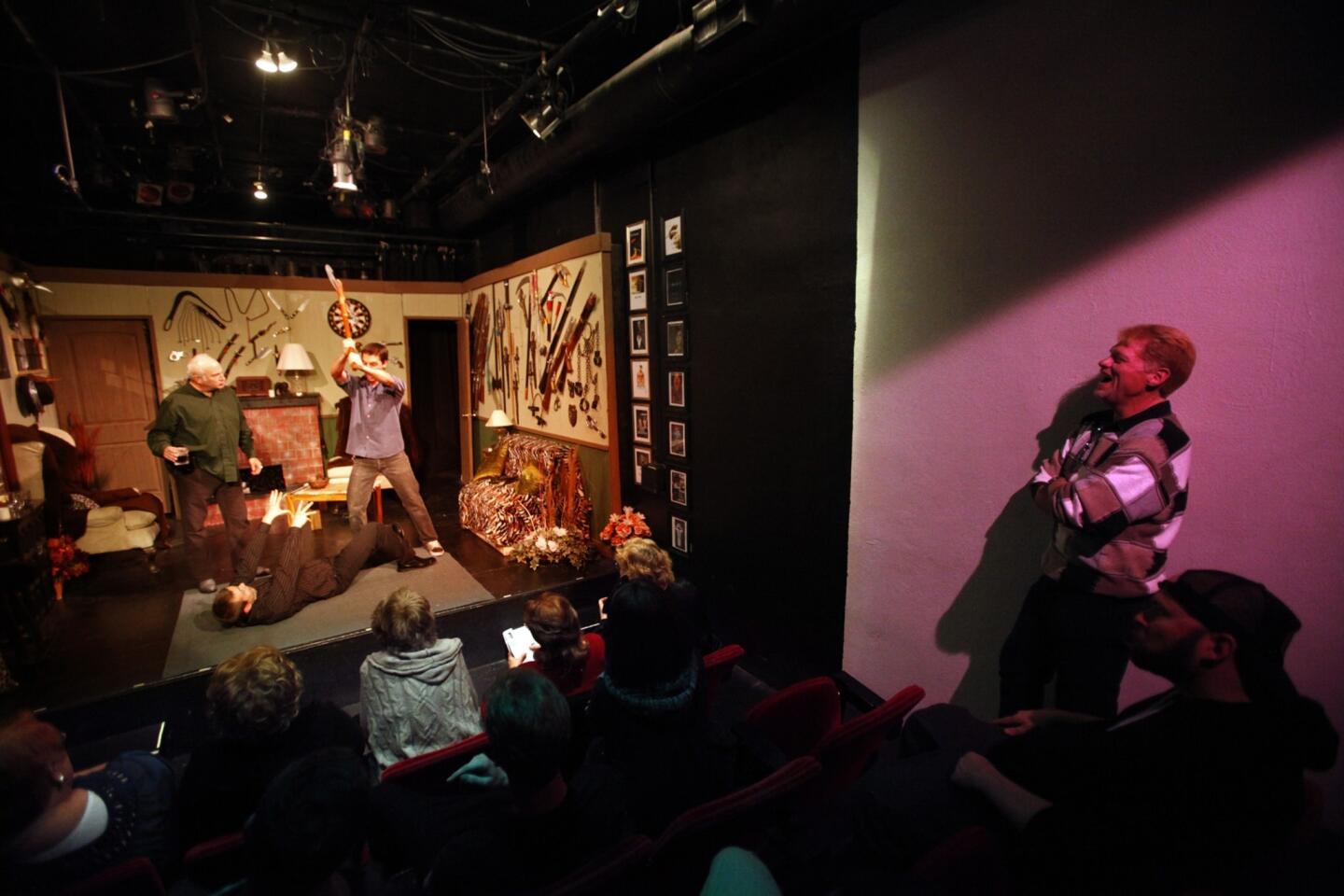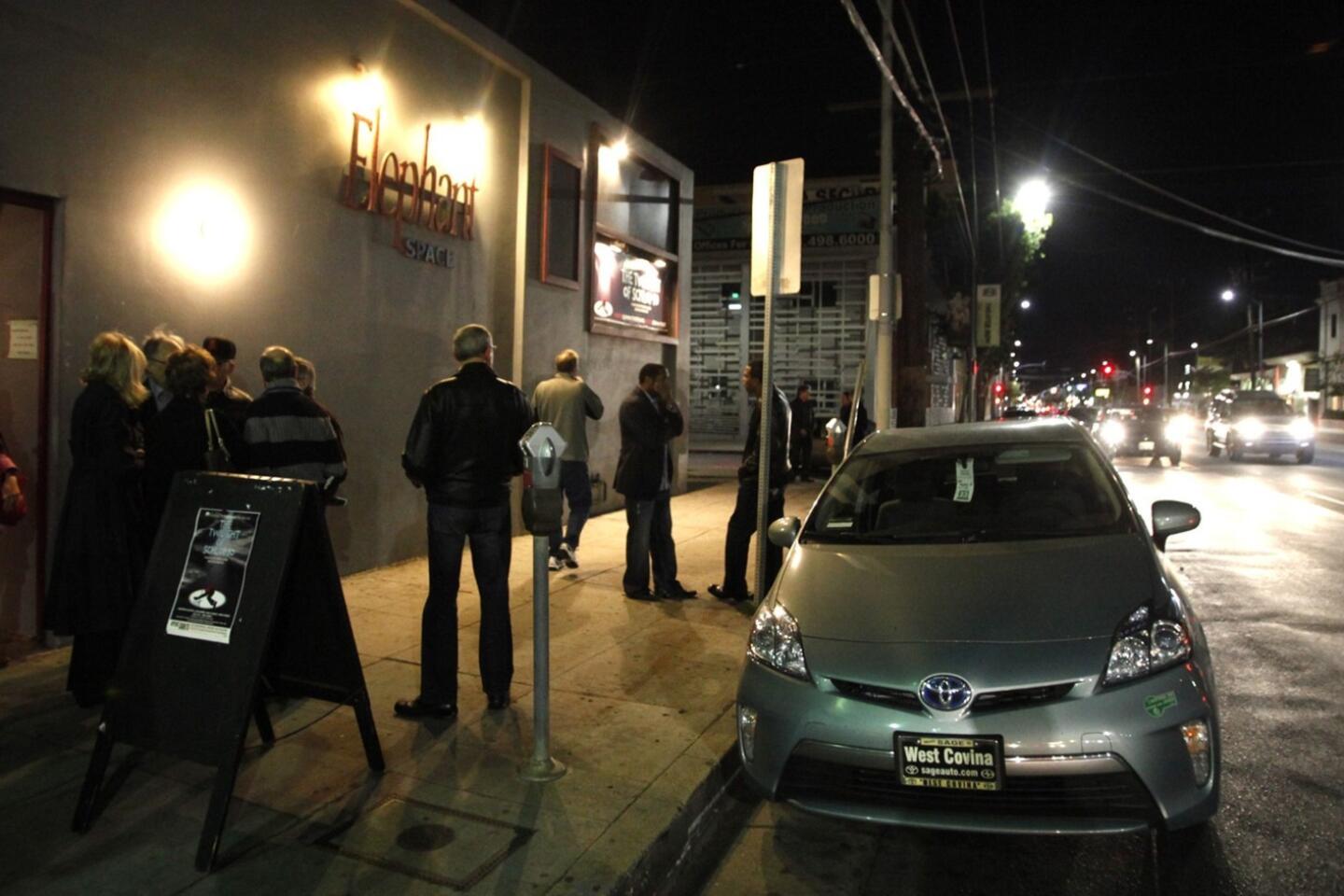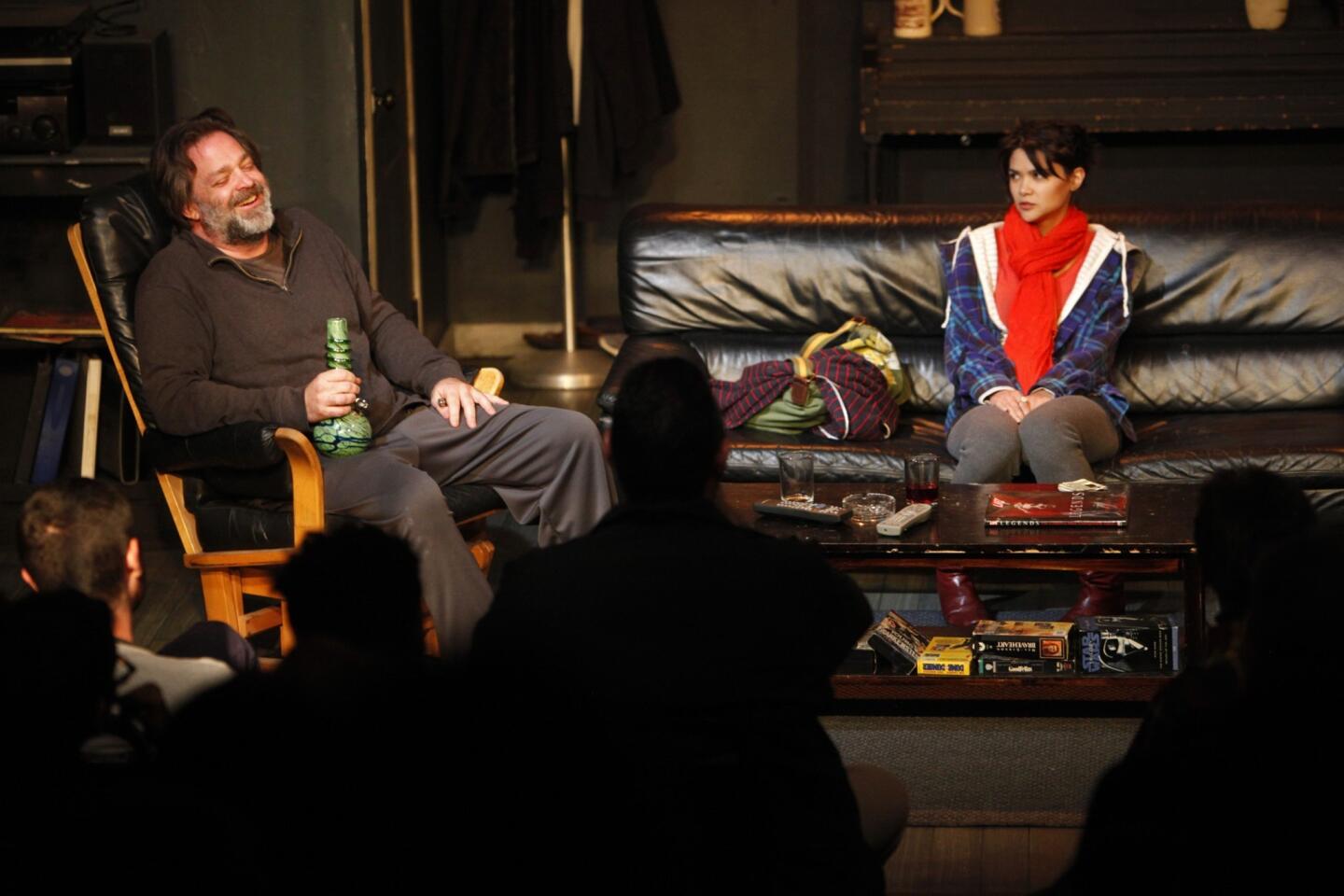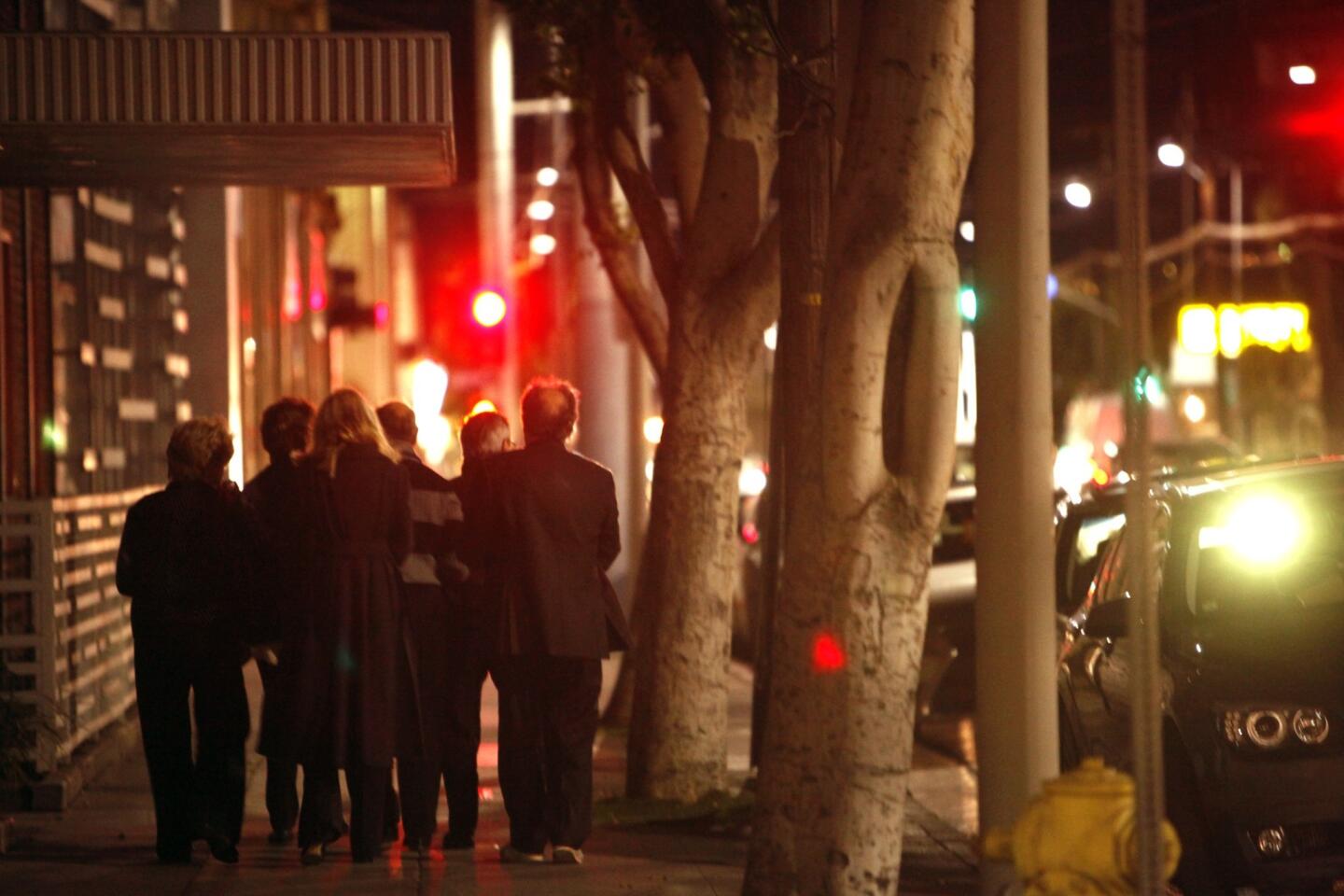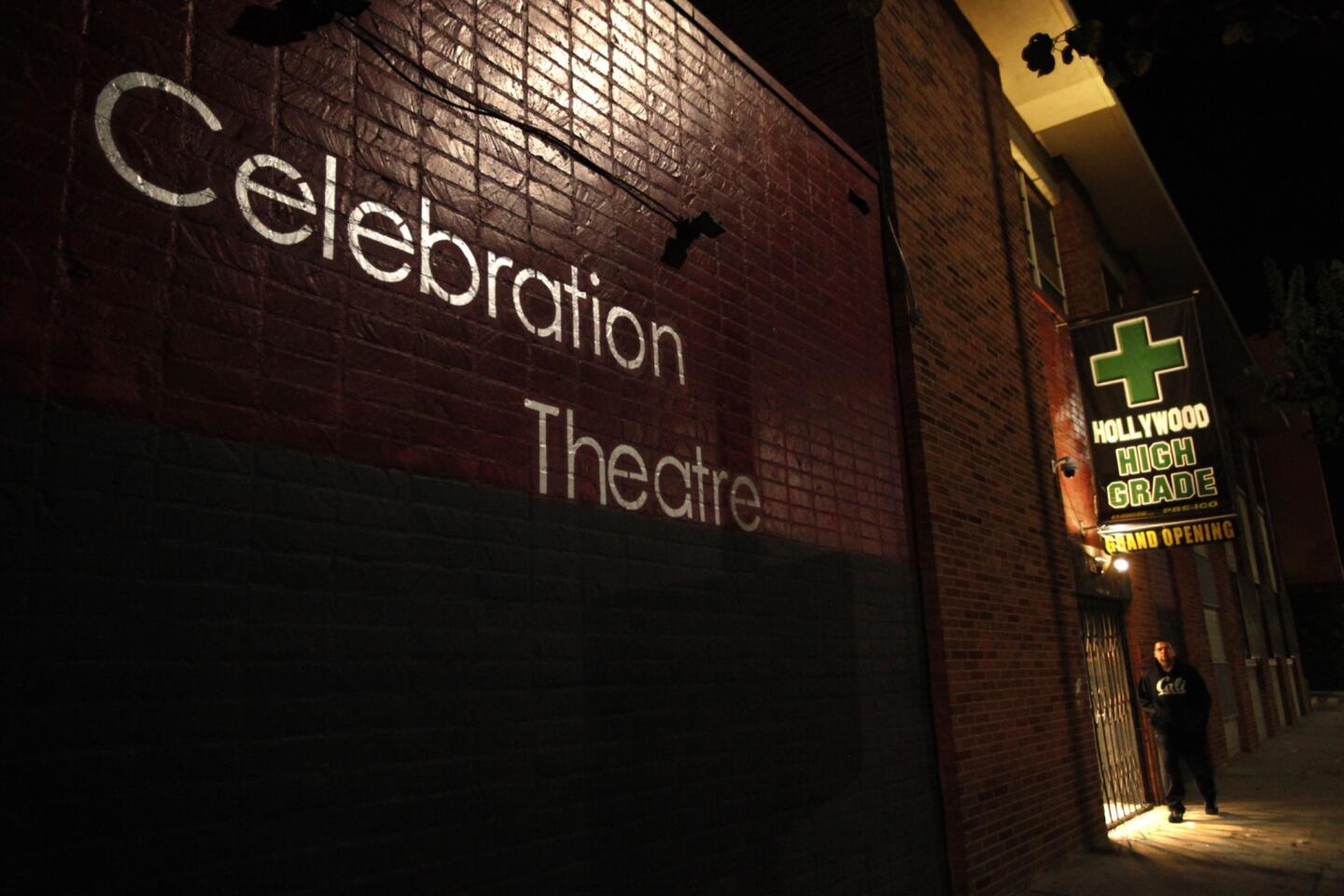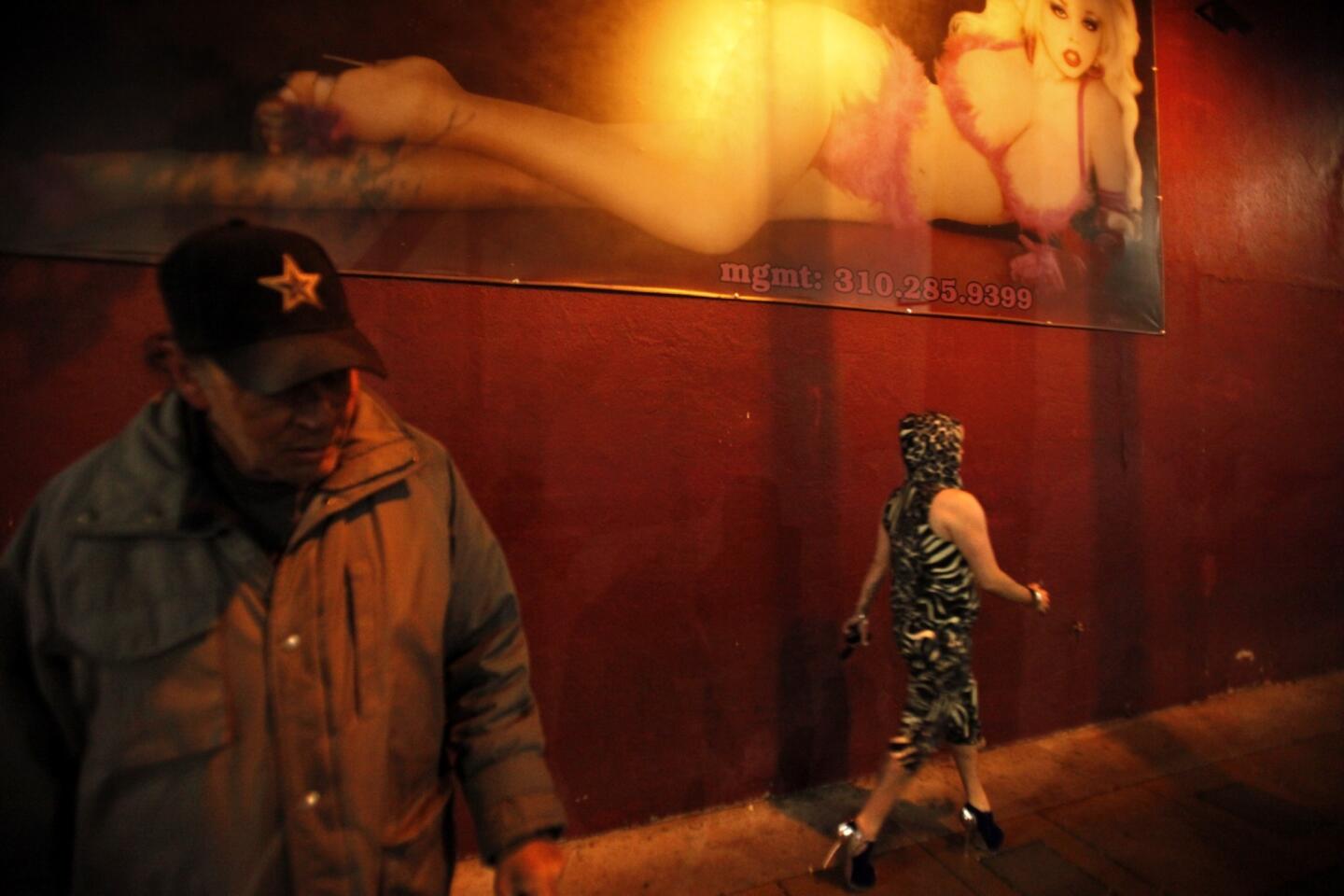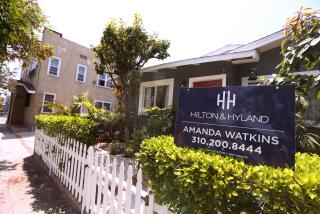Hollywood’s Theatre Row sees exits stage right, left as scene changes
For more than two decades, the mile-long stretch of Santa Monica Boulevard in Hollywood known as Theatre Row has served as home to the city’s densest plot of live theaters, drawing audiences to a diverse array of stages run by scrappy companies.
On busy nights, spectators can see works by new playwrights, revisit classic dramas or take in comedy shows. Weeknights often find the area filled with students attending acting classes and auditions.
But in the last several months, an array of challenges has mounted, and many observers believe Theatre Row’s existence — and the cultural viability of the larger neighborhood — is threatened.
Rising commercial rents have already caused two of the district’s most prominent companies — the Celebration Theatre and the Open Fist Theatre Company — to move. Theater leaders say others are in jeopardy.
INTERACTIVE: Hollywood’s Theatre Row
Some also pointed to a recent influx of marijuana dispensaries and a resurgence in criminal activity in the area, including prostitution.
“It was starting to feel a lot safer in the last five years. But in the last six months, there’s been a relapse,” said Olya Petrakova, who runs the theater space Schkapf with Bryan Brown. “There’s more drug use in the area, and prostitution is coming back.”
The problems come at a crucial time for Theatre Row, which consists of nearly 20 stages, most of which have 99 or fewer seats.
The annual Hollywood Fringe Festival, which started in 2010, brings hundreds of theater productions from around the world to the neighborhood each summer and has benefited theaters by heightening the area’s public profile.
At the same time, some companies continue to recover from the effects of the recession and are struggling to make ends meet.
PHOTOS: Arts and culture in pictures by The Times
“It’s definitely a lot harder to sell tickets now than it was a decade ago,” said Zeke Rettman, producing managing director at the Hudson Theatres. Some leaders believe that ticket prices are too expensive, and others said that it has become increasingly difficult to compete for people’s attention on social media and other marketing channels.
But with the rapid gentrification of formerly marginal areas of Hollywood, bringing new construction of commercial and residential buildings and even hotels, land values are rising as well, leading to higher rent.
Open Fist’s rent increase precipitated its departure. The company had been paying about $8,000 in monthly rent, but the landlord wanted to raise it by $4,000 a month.
“Commercial rents are creeping up again, and a nonprofit theater is not in the best position to compete in the market,” said Martha Demson, artistic director of Open Fist.
Last year, the Celebration left its home of more than two decades on Santa Monica near La Brea Avenue because its occupancy expenses — which had started to include utilities on top of rent — more than doubled.
PHOTOS: Hollywood stars on stage
In the last eight years, the cost of residing at the theater rose from $3,000 per month to roughly $7,500, according to Michael C. Kricfalusi, the company’s executive director.
The Celebration, which produces gay- and lesbian-themed plays and musicals, has found a part-time space in Atwater Village; Open Fist has opted for a nomadic existence, producing plays at different venues.
The Elephant Stages, on Santa Monica near Vine Street, will likely have to vacate its home in two years because the owner plans on selling the property. With three stages as well as a resident theater company, the Elephant has seen its rents soar since it moved to Hollywood in 1999. At the time, the company paid $3,100 per month for its 99-seat Lillian Theatre alone. It now pays $6,000 for the same space.
In the last year, several marijuana shops have opened up along Theatre Row, attracting what some see as unsavory clientele. The Celebration’s former stage is now the home of Hollywood High Grade, a medical marijuana dispensary.
PHOTOS: Best in theater for 2013 | Charles McNulty
It remains unclear how many of the shops are legally operated. Theater leaders say they tend to be small and that they tend to materialize, vanish and then reappear relatively quickly.
“They’re just hopping from place to place, like little cockroaches popping up. You can’t get rid of them. It’s terrible for business,” said Racquel Lehrman, who runs the Lounge Theatre.
She said the neighborhood has always had problems with crime, but she thinks the level has risen in the last year. “Once you hit 11 p.m. and midnight, you can feel the shift in the neighborhood. You see the prostitutes and drug dealers come out. After a certain hour, you don’t want to be there.”
The Elephant said that at least four violent crimes took place near its theaters last year, more than it had seen in any given year in recent memory.
The crimes included an incident in which a designer who was working for the Elephant was robbed at gunpoint in her car. The Lounge Theatre said that its technical director was recently held at gunpoint and that the theater lost a potential rental contract because the prospective tenant cited safety concerns.
PHOTOS: Faces to watch | Theater
Transgender prostitutes have long been a presence in the neighborhood. But theater owners say they have seen a variety of sex workers in the area over the years.
“We’ve seen more of them just as the marijuana shops started coming in. We don’t think it’s a coincidence,” said Bryan Brown of the theater space Schkapf. Other theaters said that the number of prostitutes tends to fluctuate with the seasons.
Theatre Row leaders said their myriad problems stem from the lack of meaningful backing from local government officials. They said Theatre Row has never received grants or financial assistance from the city.
“I feel like this street could have been a gem if there had been any investment from the local officials. But there’s never been any support from them,” said David Fofi, co-head of the Elephant.
But theaters also blamed themselves, saying they haven’t worked together to push issues to the political fore.
PHOTOS: The most fascinating arts stories of 2013
“It’s a changing neighborhood, and there will be tension,” said Councilman Mitch O’Farrell, whose 13th district includes part of Theatre Row. “It’s really challenging when we have no control over the leases that property owners sign.”
O’Farrell said police are aware of crime in the area and are patrolling regularly. He said the issue of marijuana shops could take a while to resolve because of complexities related to Measure D, the city ordinance approved last year by voters that is intended to crack down on illegal dispensaries.
Most of Theatre Row falls within the Hollywood Media Business Improvement District, an area dominated by television and movie production studios, including Hollywood Center Studios and the Red Studios Hollywood.
Some theater leaders said the Media District has been helpful by providing security guards who walk the streets in the evenings.
“I have seen a lot of good effort by LAPD and by the BID security,” said Jennifer Wolfson, a manager at the McCadden Place Theatre who is on the Media District board. She said that she feels crime has actually decreased in the Media District, though she said some parts of Theatre Row sit outside the district’s boundaries.
INTERACTIVE: Hollywood’s Theatre Row
But others said the Media District has been slow to react to problems. “I told them they’ve given the theater community short shrift. There’s no one on that board who has vision,” said Matt Chait, who heads the Complex, a building that houses several theater and studio spaces, and who has served on the Media District board.
For more than a decade, Theatre Row has benefited from promotional banners that were hung from streetlights lining Santa Monica Boulevard. But in recent months, the banners have deteriorated, been taken down and haven’t been replaced.
Local business leaders commissioned Theatre Row-branded medallions to replace the banners but the project has stalled because CalTrans doesn’t allow commercial promotion along state-owned highways. (Santa Monica Boulevard is part of California Route 2.)
“It’s one of these bureaucratic snafus that’s damaging to our district,” said Mike Malick, who serves as the Media District’s president.
CRITICS’ PICKS: What to watch, where to go, what to eat
The disappearance of small theaters with strong artistic reputations would be a loss for the larger cultural community, according to Madeline Puzo, dean of the USC School of Dramatic Arts and former associate producer at L.A.’s Center Theatre Group. But emerging writers and actors today no longer have to rely on physical theaters to get noticed.
“They can choose to shoot a webisode rather than rent a theater,” she said.
The Blank, which occupies the 2nd Stage Theatre on Santa Monica at Wilcox Avenue, recently held a meeting of local stage managers to discuss the area’s real-estate woes.
“No one has ever bothered to talk to property developers in a large way. A lot of momentum has come out of that meeting,” said Daniel Henning, the Blank’s artistic director.
In what may be a sign of the times, the Blank, which has operated in its own space for close to 18 years, is considering partnering with another company to share a theater.
“It would be a way to bring down our expenses,” said Henning. “And it could help another company out.”
More to Read
The biggest entertainment stories
Get our big stories about Hollywood, film, television, music, arts, culture and more right in your inbox as soon as they publish.
You may occasionally receive promotional content from the Los Angeles Times.
